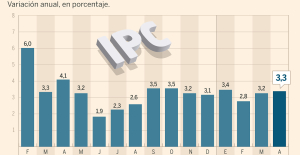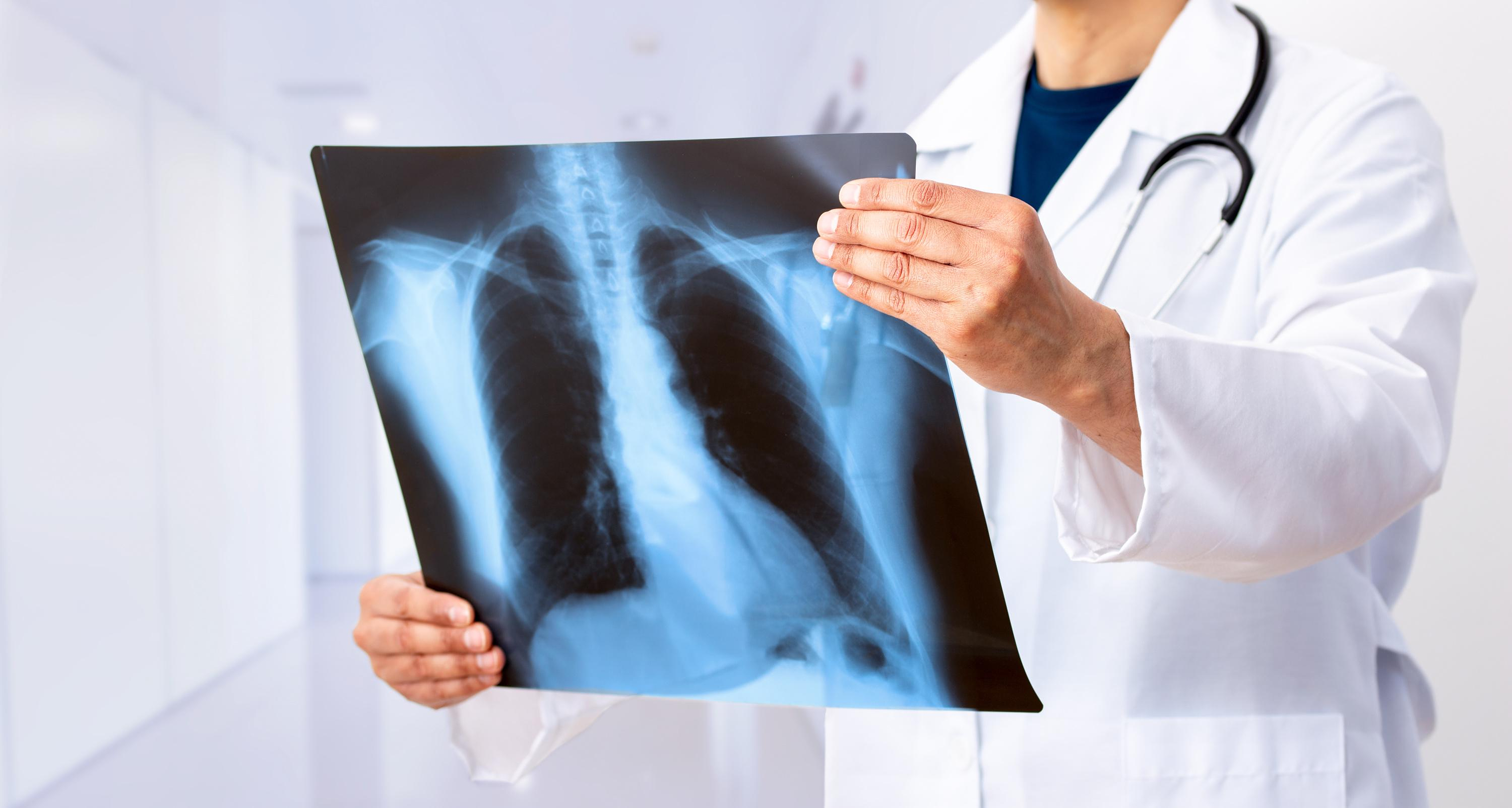Not all organs and vessels are easily visible on traditional radiology imaging exams. For better visualization of possible lesions, radiologists can then use an intravenous injection of a contrast product (PDC): iodine derivatives for scanners and gadolinium for MRIs. Whatever they are, these contrast products were until now delivered to patients in pharmacies on medical prescription. However, following the adoption of a Social Security financing bill, they will no longer have to worry about purchasing these products on their own. From March 1, 2024, PDCs will be provided directly to radiologists. Although this new measure should bring relief to patients, professionals remain mixed, mainly for budgetary and organizational reasons.
Obviously, this change will simplify the patient's care pathway by avoiding having to go through the pharmacy. “To have a tooth pulled, dentists do not ask patients to buy the necessary anesthetics themselves. It's the same thing for contrast products: these are products for professional use. It is therefore not logical that it is up to the patient to obtain it,” says Dr Jean-Philippe Masson, president of the National Federation of Radiologists (FNMR). If the measure takes effect on March 1, radiologists will however be able to continue to prescribe them for a one-month trial period.
For the rest, this new organization will mainly have a financial impact. In a July 2022 report aimed at limiting the misuse of PDCs, the National Health Insurance Fund (CNAM) emphasized that this change will “limit the waste of products purchased by patients, but not used”. Ordering and inventory management errors: until now, it was estimated that the loss of PDCs delivered in France amounted to 30% for iodine derivatives and up to 15% for gadolinium. For good reason, these products provided to patients were single-use. From now on, radiologists will be able to purchase them in large quantities for several people. “France was still one of the only EU member countries not to use this so-called multi-patient packaging, which is nevertheless easier to manage and less expensive because all doses will be used. Before, single-use products were thrown away after the shelf-life date had passed,” underlines Dr Jean-Philippe Masson.
Also readHow artificial intelligence is transforming radiology
However, the measure is far from unanimous among health professionals. Financially, the cost of contrast products represents a penalty of around 200 million euros for radiologists. For their part, the two main pharmacists' unions, the FSPF (Federation of Pharmaceutical Unions of France) and the USPO (Union of Community Pharmacists' Unions) also fear collateral damage. “This new organization will cause the pharmaceutical network to lose 25 million,” says Philippe Besset, pharmacist and president of the FSPF. This is why we are currently in discussions with the public authorities in order to find a solution to minimize this budgetary impact while improving the care pathway.
However, fears are also focused on the potential impacts for the patient. “In return for pseudo financial losses suffered by professionals, this measure is likely to lead to excess fees by radiologists not covered by social security, which creates a new problem and a greater disparity in access care", warns Pierre-Olivier Variot, president of the USPO.

 B:SM will break its investment record this year with 62 million euros
B:SM will break its investment record this year with 62 million euros War in Ukraine: when kyiv attacks Russia with inflatable balloons loaded with explosives
War in Ukraine: when kyiv attacks Russia with inflatable balloons loaded with explosives United States: divided on the question of presidential immunity, the Supreme Court offers respite to Trump
United States: divided on the question of presidential immunity, the Supreme Court offers respite to Trump Maurizio Molinari: “the Scurati affair, a European injury”
Maurizio Molinari: “the Scurati affair, a European injury” Inflation rises to 3.3% in April and core inflation moderates to 2.9%
Inflation rises to 3.3% in April and core inflation moderates to 2.9% Pedro Sánchez announces that he continues "with more strength" as president of the Government
Pedro Sánchez announces that he continues "with more strength" as president of the Government Irritable bowel syndrome: the effectiveness of low-carbohydrate diets is confirmed
Irritable bowel syndrome: the effectiveness of low-carbohydrate diets is confirmed Beware of the three main sources of poisoning in children
Beware of the three main sources of poisoning in children Relief at Bercy: Moody’s does not sanction France
Relief at Bercy: Moody’s does not sanction France More than 10 million holders, 100 billion euros: the Retirement Savings Plan is a hit
More than 10 million holders, 100 billion euros: the Retirement Savings Plan is a hit Paris 2024 Olympic Games: the extension of line 14 will open “at the end of June”, confirms Valérie Pécresse
Paris 2024 Olympic Games: the extension of line 14 will open “at the end of June”, confirms Valérie Pécresse Failing ventilators: Philips to pay $1.1 billion after complaints in the United States
Failing ventilators: Philips to pay $1.1 billion after complaints in the United States The Cannes Film Festival welcomes Omar Sy, Eva Green and Kore-Eda to its jury
The Cannes Film Festival welcomes Omar Sy, Eva Green and Kore-Eda to its jury Prisoner in Israel, a Palestinian receives the International Prize for Arab Fiction
Prisoner in Israel, a Palestinian receives the International Prize for Arab Fiction Harvey Weinstein, the former American producer hospitalized in New York
Harvey Weinstein, the former American producer hospitalized in New York New success for Zendaya, tops the North American box office with Challengers
New success for Zendaya, tops the North American box office with Challengers Skoda Kodiaq 2024: a 'beast' plug-in hybrid SUV
Skoda Kodiaq 2024: a 'beast' plug-in hybrid SUV Tesla launches a new Model Y with 600 km of autonomy at a "more accessible price"
Tesla launches a new Model Y with 600 km of autonomy at a "more accessible price" The 10 best-selling cars in March 2024 in Spain: sales fall due to Easter
The 10 best-selling cars in March 2024 in Spain: sales fall due to Easter A private jet company buys more than 100 flying cars
A private jet company buys more than 100 flying cars This is how housing prices have changed in Spain in the last decade
This is how housing prices have changed in Spain in the last decade The home mortgage firm drops 10% in January and interest soars to 3.46%
The home mortgage firm drops 10% in January and interest soars to 3.46% The jewel of the Rocío de Nagüeles urbanization: a dream villa in Marbella
The jewel of the Rocío de Nagüeles urbanization: a dream villa in Marbella Rental prices grow by 7.3% in February: where does it go up and where does it go down?
Rental prices grow by 7.3% in February: where does it go up and where does it go down? Europeans: a senior official on the National Rally list
Europeans: a senior official on the National Rally list Blockade of Sciences Po: the right denounces a “drift”, the government charges the rebels
Blockade of Sciences Po: the right denounces a “drift”, the government charges the rebels Even on a mission for NATO, the Charles-de-Gaulle remains under French control, Lecornu responds to Mélenchon
Even on a mission for NATO, the Charles-de-Gaulle remains under French control, Lecornu responds to Mélenchon “Deadly Europe”, “economic decline”, immigration… What to remember from Emmanuel Macron’s speech at the Sorbonne
“Deadly Europe”, “economic decline”, immigration… What to remember from Emmanuel Macron’s speech at the Sorbonne These French cities that will boycott the World Cup in Qatar
These French cities that will boycott the World Cup in Qatar NBA: young Thunder coach Mark Daigneault named coach of the year
NBA: young Thunder coach Mark Daigneault named coach of the year Athletics: Noah Lyles in legs in Bermuda
Athletics: Noah Lyles in legs in Bermuda Serie A: Dumfries celebrates Inter Milan title with humiliating sign towards Hernandez
Serie A: Dumfries celebrates Inter Milan title with humiliating sign towards Hernandez Tennis: no pity for Sorribes, Swiatek is in the quarterfinals in Madrid
Tennis: no pity for Sorribes, Swiatek is in the quarterfinals in Madrid

















